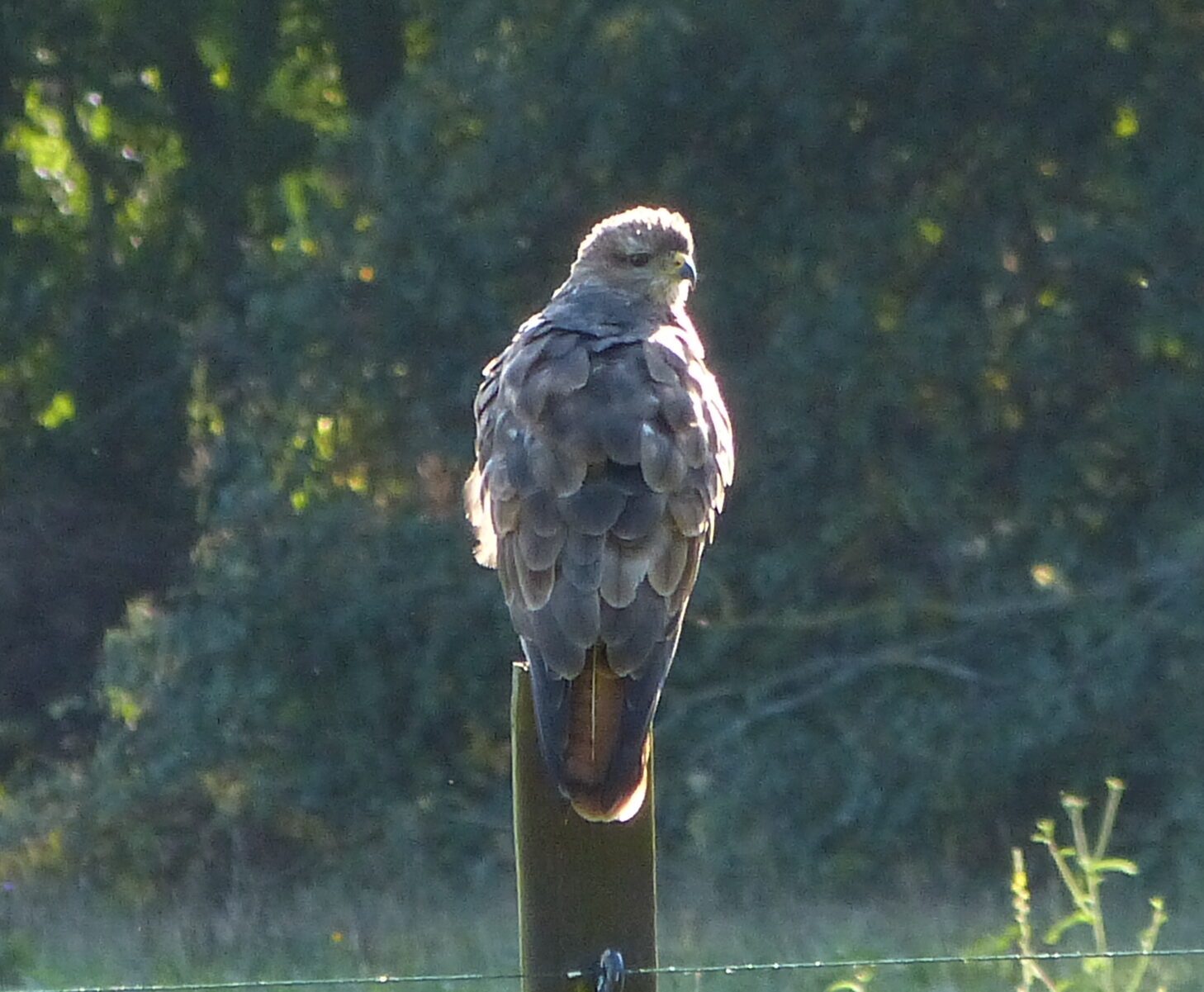Birds on Bookham Commons
The different landscapes on Bookham Commons support a wide variety of birdlife. From watery habitats through to tall trees and thick hedgerows, the Commons provides a haven for a wide range of bird species. The bird hide on the Upper Eastern Pond provides an opportunity to spot seasonal visitors and residents. The featured image is a Goldfinch, Cardulis cardulis, recognisable through their bright colours and wonderful twittering song.
Nightingale
Nightingales, Luscinia megarhynchos, may look unsuspecting however it is well known for its distinct and beautiful bird song. Native to the UK, the Nightingale may be seen, or heard, between Spring and Autumn. The Friends funded the ‘Life on the Edge’ program which improved habitats for Nightingales on the Common. A pair returned to the Commons in 2021.

Kestrel
Kestrels, Falco tinnunculus, are a bird of prey that you can see hovering on the hunt all year round. There are approximately 31,000 breeding pairs across the UK.

Pied Wagtail
The Pied wagtail, Motacilla alba, is clearly identified by its distinctive colour and wagging tail as it hops across the ground. You can find these birds on the Commons between January and December.

Robin
The Robin, Erithacus rubecula, is a bold and familiar favourite. Seen all year round, the vibrant orange feathers are a clear giveaway.

Grey Heron
Grey herons, Ardea cinerea, can be found all year round. The Commons has the largest Heronry in Surrey, these birds can frequently be spotted at the ponds where they hunt for fish.

Little Grebe
Little Grebe, Tachybaotus ruficollis, is a common water bird that can be found all year round. At least one pair usually breeds on one of the ponds each year.

Mallard
Mallards, Anas platyrynchos, can be found milling around the ponds on Bookham Commons. They tend to pair up in October and November and nest in March.

Buzzard
The Buzzard, Buteo buteo, is common and widespread. They can be seen soaring over the Plains and Woodlands, scanning the ground for prey or carrion. They will also eat earthworms when larger prey is scarce. They have a distinctive mewing call, which is often heard whilst they are on the wing.

Sparrowhawk
The Sparrowhawk, Accipter nicus, is a fast and agile hunter of birds, which they pursue through trees at great speed. They can also be seen soaring over woods, especially in Spring. The female is larger than the male with a brown back, whilst that of the male is slaty grey.

Great Spotted Woodpecker
Great spotted woodpeckers, Dendrocopos major, are plentiful on the Commons where their distinctive drumming can be heard in the woods in early Spring. They also have an explosive “tchick” call.

Nuthatch
Nuthatches, Sitta europaea, are an agile climber which, unlike most birds, can also descend trees headfirst. They often wedge nuts into bark crevices in order to hammer them open.

Treecreeper
The treecreeper, Certhia familiaris , often goes unnoticed, as it shuffles up tree trunks looking for insects. It usually makes its way up one tree, before flying to the base of another and repeating the process.

Chiffchaff
Chiffchaffs, Phylloscopus collybita, arrive in early Spring and can often be heard singing their name over and over again. Some birds now overwinter in the UK, whilst the majority migrate back to Africa in the Autumn.

Whitethroat
Whitethroats, Sylvia communis, are another Summer visitor arriving in April. They are often found residing in open country with low bushes such as the Plains on the Commons. They have a distinctive scratchy song, which is delivered from a perch or a short bouncing display flight.

Blackcap
The Blackcap, Sylvia atricapilla, is a distinctive warbler with a sharp scolding “tac” call, but a beautiful, rich, varied song. They can be found all over the Commons in Spring. Most migrate to Africa in the Autumn, but a few remain and sometimes visit gardens in the Winter.

Garden Warbler
The Garden Warbler, Sylvia borin, has no distinctive patterning, but has a beautiful song, similar to the blackcap. There is a slight difference with the call sounding more scratchy and lasting longer, with no flourish at the end. It is a Summer visitor and can be seen all over the Commons.
